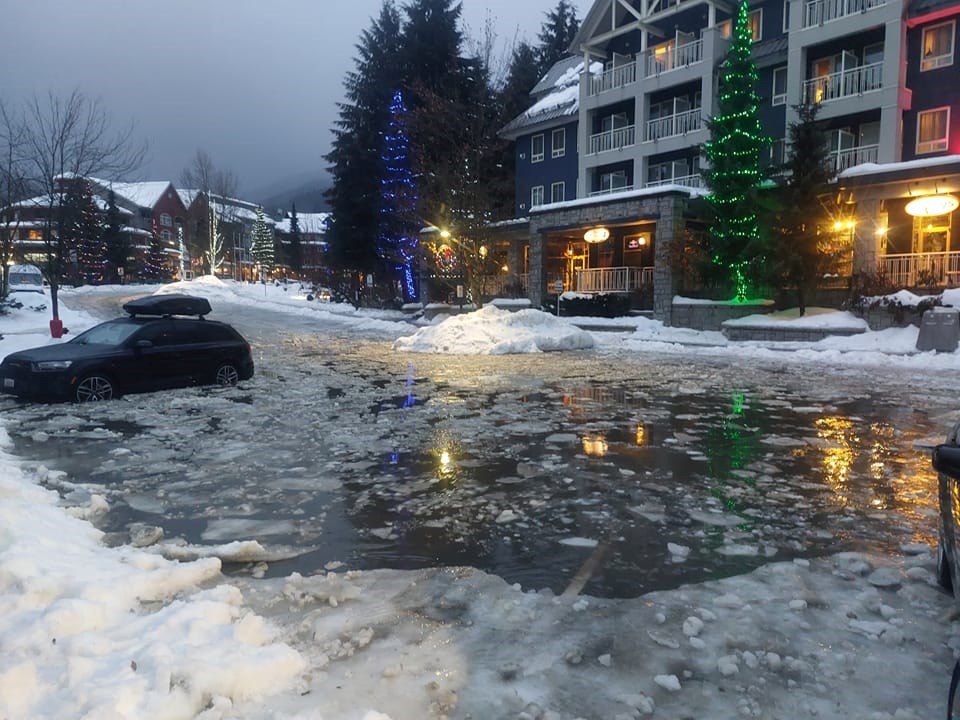The Squamish-Lillooet Regional District (SLRD) will consider a bylaw update that changes the way the district measures, talks about and addresses climate change at its upcoming Jan. 29 board meeting.
The amendments address updates to the SLRD’s Regional Growth Strategy (RGS), which, per the Local Government Act, was put up for review in 2024. The update mostly targets the last of 11 goals in the RGS: taking climate action.
Here's what's up for discussion in the climate action file.
Strengthening emissions reduction targets
The amendment moves the SLRD away from B.C.’s provincial emissions targets to the more stringent targets suggested by Intergovernmental Panel on Climate Change.
The provincial targets aim for a 40-per-cent reduction of planet-warming greenhouse gas emissions below 2007 levels by 2030, 60-per-cent by 2040 and 80-per-cent by 2050.
The amendment will see the SLRD strengthen its targets to a 45-per-cent reduction below 2010 levels by 2030 and reach a net-zero region by 2050 to avoid catastrophic global warming exceeding 1.5 C. Member municipalities are asked to contribute to meeting targets, but the bylaw recognizes a disparity in their abilities to take action.
“Looking at the broad level—Braylorne, Gold Bridge and Lillooet—we are trying to achieve reduced gas emissions of course, but it's definitely harder for us ... because we don’t have regional transit options at this time,” noted Lillooet Mayor Laurie Hopfl.
The language contained in the proposed amendment asks member municipalities to “adopt Regional Context Statements that identify how local land use, transportation and solid waste policies will contribute to meeting” district-wide goals, rather than meet the new SLRD goals themselves.
“It’s through the Regional Context Statements that the member municipalities communicate how they’re contributing to that regional target,” said Claire Daniels, senior planner with the SLRD.
Those targets are expected to shift over time, so the draft proposal says future targets will be based on the "best science" at the time.
Measuring climate action
The original RGS considered two annual indicators to help determine progress on climate change: the total energy used and total level of planet-warming greenhouse gas emissions.
The new bylaw adds three new indicators: the amount of energy used by residential, commercial and some industrial buildings; community-level data on greenhouse gas emissions from on-road transportation; and estimates of greenhouse gas emissions from waste disposed at regional district landfills.
Low-impact transportation
The plan also calls for municipalities to develop creative ways in Official Community Plans (OCP) to reduce “vehicle-kilometres-travelled” within communities.
Where those kilometres can’t be reduced, the plan aims to make travel less emissions-intensive. The proposed amendment suggests “expanding and enhancing the electric vehicle infrastructure network across the region,” and working with the provincial government to deliver regional transit and connections to transit hubs outside of the SLRD.
The amendment also calls for the promotion of “active transportation options, including e-bikes and other zero-emissions options” through OCP and Active Transportation Plans and by identifying gaps in the active transportation network—ensuring proximity to essential services, safe routes, and providing “end-of-trip facilities at community and regional nodes/hubs.”
Promoting climate equity
The report calls for community planning to “support climate equity by considering the needs of vulnerable populations who may be unduly affected by climate policies and actions.”
Climate-induced disasters exacerbate existing inequalities within society; those with fewer resources or access to services are often the most affected during a disaster, and the least able to recover once the initial damage is done.
The bylaw suggests “local government decision-making processes consider climate equity and by working with community organizations, local governments and provincial agencies/authorities.”
Eschewing carbon offsets
Carbon offsets are a way to promote emissions reductions through tradeable certificates that balance out greenhouse gas emissions by funding projects that reduce, remove or prevent emissions elsewhere. Questions have been raised about whether they're an effective form of climate action, or whether they consist of "green-washing," a practice that makes a product or activity seem more environmentally friendly than it actually is.
The amendment nixes a previous plan to use local carbon offsets and to explore the creation of a regional carbon trading system that would promote local sequestration projects.
“I’ve never figured out how you can sort of do the wrong thing but if you spend a bunch of money and buy offsets, you can balance it," said SLRD Area D Director Tony Rainbow. "It makes you feel better and that seems kind of wrong because we’re not actually solving the problem, we’re buying our way out of it.”
While offsets may be off the table, the bylaw continues to prioritize natural sequestration systems that naturally draw down and hold onto planet-warming carbon dioxide, like trees and wetlands. The amendment includes a new category of natural sequestration—coastal ecosystems. So-called “blue carbon” is stored in spaces like tidal marshes, mangroves and seagrass meadows.
The SLRD gave first reading to the proposed bylaw amendment on Nov. 27. Second reading, third reading and the adoption of the amendment will be considered at the Jan. 29 meeting of the board.




